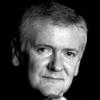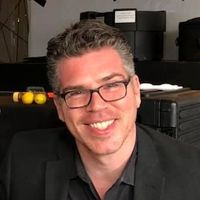-
Posts
154 -
Joined
-
Last visited
-
Donations
0.00 USD
Contact Methods
-
Website URL
http://www.jimandersonsound.com
-
ICQ
0
Profile Information
-
Gender
Male
-
Location
brooklyn, ny
Recent Profile Visitors
2,588 profile views
jim anderson's Achievements
Newbie (1/14)
-
Take a look at the Peterson Strobe Tuner and some of their other products. http://www.petersontuners.com/index.cfm?category=67 It's much like the Conn Tuner that I grew up with.
-
As Auto-tune states, it's to be used on a track at a time. It wouldn't know what to do using it the way you propose. I've not aware of the program that you're referring to, sorry.
-
There are CD players that have variable pitch adjustment, as well as cassette players. It wouldn't change the pitch automatically, you'd have to make the adjustment you require.
-
Thanks J.H. I'm proud of those recordings and happy to have been lucky enough to have been asked to be involved. At the beginning of the series, I really was just beginning my New York career and it was difficult making a name for yourself, back then, with all the great talent that was working in the studios. I recorded albums 2-5 of John's suite of recordings. "Castles of Ghana" was recorded digitally, 2 track (Mitsubishi), at Eras Studio, NYC, "Dance of the Love Ghosts was recorded also 2 track at Sorcerer Sound, NYC, "Fields" and "Shadows" were recorded multi-track at A & R and mixed at the Gramavision Studio. The final two would have been analogue productions. Bob Ludwig mastered all of the Gramavision recordings and did a spectacular job getting this material on vinyl. He was doing a lot of DMM mastering at the time and had the experience and knowledge of how to get that amount of time on a side. (I know of a couple of classical recordings that Bob was responsible for that had a side length of at least 38 minutes, but then again that was DMM) There's a wide dynamic range on the Carter recordings and the loud moments don't last for long, resulting in a side that can hold all of those grooves. It's the land between the loud grooves that takes up all the space and results in a short side.
-
Dear Six, Thanks for the kind words. The McCoy Tyner album was part of a series of recordings that we did as live radio broadcasts for WBGO (jazz radio in NYC) celebrating the anniversary of Impulse Records (other evenings featured Dianna Krall, Donald Harrison, and some others) over the course of a week. The McCoy album was the only one from the evenings recorded directly to two track, with no multi-track back-up. I used some of the same techniques that I used in the past on other recordings from the Vanguard (Benny Green, "Testifying" or Bebo Valdez "Live at the Village Vanguard"). One of the keys to those recordings are the use of omni-directional microphones to pick up the audience. Those omni's help to give the sense of the room to the recording. It also helps that I've worked with George and Al, a lot in the studio and have a good sense of their sound, as well. It's one of the best rooms in NYC for a live recording and part of that is the fact that it's not a very lively room, in the first place and they tend to not use a great deal of reinforcement for the audience. I've really enjoyed hearing music in the Vanguard when a band like Phil Woods plays there and uses no microphones or amplifiers for their set. Now, that's acoustic! Best, Jim
-
For any Tec-Heads in the audience: I wanted to alert you to this new service from AES: AES JOURNAL PODCAST Each month the AES Journal Podcast will quickly guide you through the contents of the Journal's papers, "back of the book" articles, and other Society activities. You can listen to the AES Journal Podcast on your computer or MP3 player. If you use an application such as iTunes you can subscribe to receive the AES Journal Podcast and have it delivered automatically to your computer each month. If you'd rather not subscribe, you can download each podcast episode individually. You can find subscribe and download links on the AES Podcasts page: <http://www.aes.org/podcasts/> The AES Journal podcast is free and you can cancel at any time.
-
SIDENOTE: Jim, any chance of getting NPR to do a story on the home studio revolution? I have the perfect band/project for them to discuss. Using modern technology to record in an "old school" way, in the basement of a 100-year old house and getting professional results. Sounds interesting to me.
-
Still, your playback machine would have been adjusted to the NAB curve for playback, thus affecting the CCIR playback
-
I wouldn't recommend loading them into a DAW 'flat'. If I'm reading all of this correctly. You'll be loading them in with the NAB curve, because that's what your machine is adjusted to. There is no 'flat' setting or the equivalent of turning off the RIAA curve on an LP playback. The best thing is to realign the machine for CCIR eq with an MRL tape and transfer the tape with that curve. At NPR, we had tapes from the EBU all the time and had a set of playback cards that had been set for CCIR playback. You'll get the best result, that way.
-
I'll send your note on to Ned Wharton, of NPR
-
Liane and I have been friends for more than 30 years, going back to my days at NPR. The original recording by Noah was legendary among his NPR friends and the source of many laughs. We had a good laugh doing that piece, as well. The recording by Noah was the reason we used the tune "Take it to the Limit" in the first place. There's some video on the NPR site that you can see us in action. Here's a link for the http://www.npr.org/templates/story/story.p...11#commentBlock
-
All Music has almost everything I've done. http://allmusic.com/cg/amg.dll?p=amg&s...3cfqxql5ldfe~T4 That's quite an impressive list. I see you recorded the final album by George Adams, Old Feelin'. What was it like to work with him? There were a few albums with George at that time: Nightingale, America, along with Old Feelin' Old Feelin' had an interesting, young rhythm section: Lewis on drums, Santi on bass, and Ray on piano along with the 'old guys': George, etc. and it might have been the first time that he had played with them. It pushed him in some different directions that he might not normally go. You know that was 16 years ago and the fact that I'm having trouble thinking of any stories of George, means the sessions went smoothly. Not that you only remember the 'bad' ones or the 'hard' ones, but the more 'difficult' sessions do have a way of etching themselves in the memory. I can clearly see the session at Clinton Studio B and remembering working on a different approach to the drum sound for the album. It was a little more 'pop,' than jazz for the time and that approach was the right one for the album. It may have been direct to two track, as well. My partner, Kazunori Sugiyama, would remember, I'm sure. I'll ask him if he has any tales from the sessions. My friend, Kazunori Sugiyama, producer of the three George Adams sessions for Somethin' Else, writes: Multi-track recording. George sang on a few, tunes. He needed some takes, certainly. It was mixed at Effanel Music. (Only Nightingale is Live to Two. America is also multi-track.) This is the band that went to play Mt. Fuji Jazz Festival that year. It could be that the band/booking was set first, and that made this recording as a release for their appearance. George and Hannibal go back a long time and Jean-Paul knows George from Pullen/Adams days --- JP might have toured with them in Europe (probably he was with McCoy’s or Elvin’s then), or something. Ray Gallon was a pianist for George’s Quartet for previous year’s Mt. Fuji Jazz Festival. See, my memory is not infallible. Kaz said he'd check his notes for any other insights.
-
A couple of days ago I received an e-mail from Maria Schneider with the news that Coming About is being reissued. Good news indeed! I wonder if she'll use the 24 bit archive from the original mastering session?
-
All Music has almost everything I've done. http://allmusic.com/cg/amg.dll?p=amg&s...3cfqxql5ldfe~T4 That's quite an impressive list. I see you recorded the final album by George Adams, Old Feelin'. What was it like to work with him? There were a few albums with George at that time: Nightingale, America, along with Old Feelin' Old Feelin' had an interesting, young rhythm section: Lewis on drums, Santi on bass, and Ray on piano along with the 'old guys': George, etc. and it might have been the first time that he had played with them. It pushed him in some different directions that he might not normally go. You know that was 16 years ago and the fact that I'm having trouble thinking of any stories of George, means the sessions went smoothly. Not that you only remember the 'bad' ones or the 'hard' ones, but the more 'difficult' sessions do have a way of etching themselves in the memory. I can clearly see the session at Clinton Studio B and remembering working on a different approach to the drum sound for the album. It was a little more 'pop,' than jazz for the time and that approach was the right one for the album. It may have been direct to two track, as well. My partner, Kazunori Sugiyama, would remember, I'm sure. I'll ask him if he has any tales from the sessions.
-
Thanks. There's another album from those same sessions at the Vanguard, "Standards." Those albums were recorded direct to 2 track stereo in the Effanel Recording Truck (the Bread Truck) with no multi-track back-up. That was typical and standard for the time. With a band like that, you could walk away with a pretty good mix. J.J. also came into the project prepared. The arrangements were concise and he knew what he wanted. Have you heard J. J.'s "The Brass Orchestra?" That's the last project that I did with him. He called me a little while before he died and asked if I'd be interested in working on a solo project with him. I told him, of course I would. I'd be happy to record an album where he just held the horn! He was one of a kind.
_forumlogo.png.a607ef20a6e0c299ab2aa6443aa1f32e.png)


